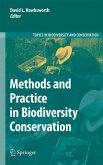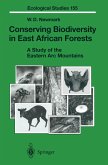This book presents some results on selected taxa in the Himalayan region (mainly Nepal), pinpoints the threats to their survival and suggests ways how to avoid their extinction. Most chapters are based on graduate research projects - relatively long-term field studies. The data presented here can be a good source of updated information on the subject and will prove to be a very useful reference in future studies of Himalayan biodiversity. They also tend to pinpoint the existing gaps in our knowledge of this region. All the chapters are based on recent trends of biodiversity and conservation vision, so the book can be a potential alternative to the existing relatively older books with outdated vision and information. Its main goal, however, is to disseminate the information about biodiversity conservation problems in the Himalayan region among the people in the developed world.
From the reviews: "The book is well referenced throughout and exposes the reader to literature beyond what is presented in the empirical case studies. ... Also useful are numerous good-quality photographs and maps, which allow the reader to put the case studies into appropriate context. ... This book, therefore, appeals to multiple audiences ... it is a useful starter and a suitable text for undergraduate or postgraduate students. ... make a lasting contribution to conservation of Himalayan biodiversity in the face of rapid change." (Shonil A. Bhagwat, Mountain Research and Development, Vol. 32 (3), August, 2012)








